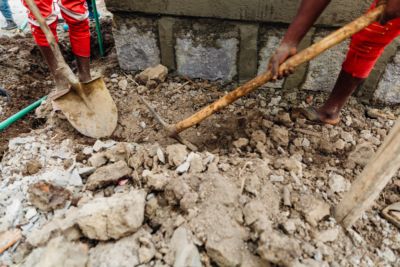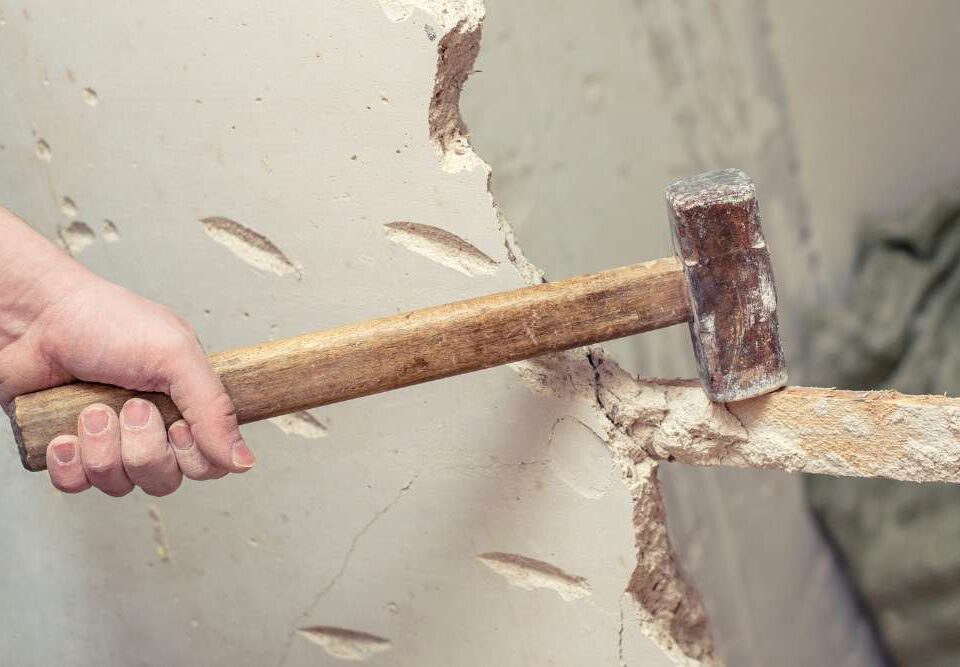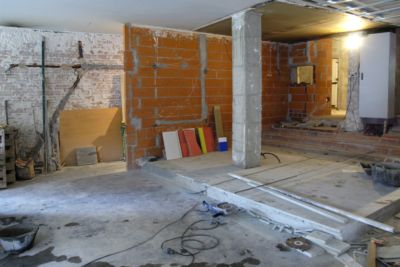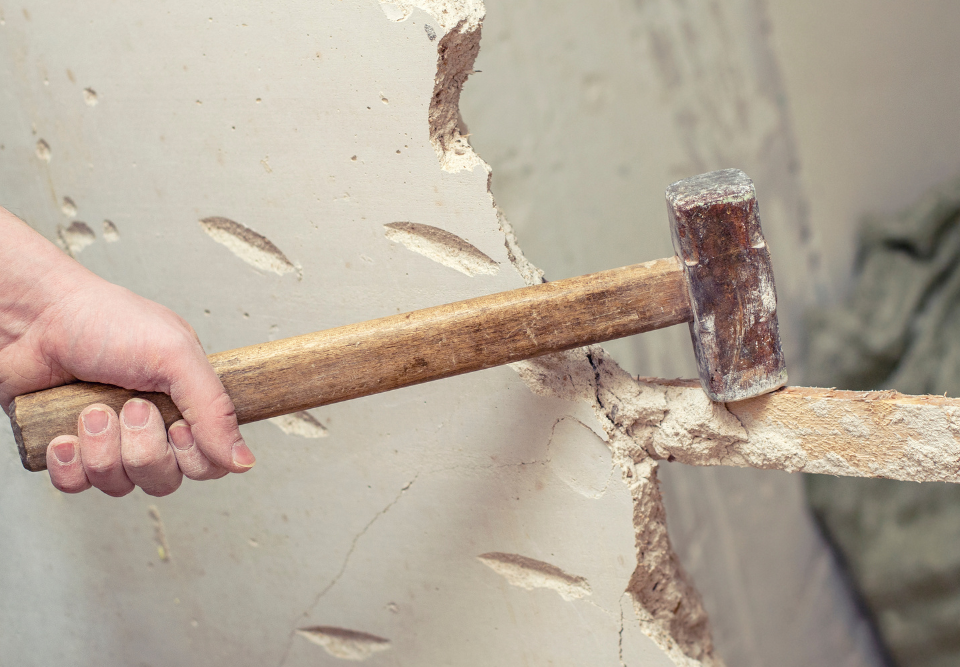
How Shed Demolition Can Free Up Valuable Space
September 8, 2025
Why Drywall Removal Is Often the Best Option for Your Home
September 8, 2025Tips for Efficient Demolition Cleanup After a Home Renovation
When the dust settles after a home renovation, the cleanup phase often feels more daunting than the demolition itself. Piles of broken drywall, wood scraps, tiles, and insulation can quickly overwhelm even the most organized homeowner. Efficient demolition cleanup is about more than simply hauling away debris; it’s about ensuring your space is safe, organized, and ready for the next stage of transformation. Without a clear plan, leftover rubble can delay progress, create hazards, and sap your energy. With the right approach, however, cleanup becomes a structured process rather than a stressful chore. Knowing how to manage waste, handle safety concerns, and streamline disposal methods can make a huge difference. Whether you’re tackling small renovations or major overhauls, strategic cleanup not only keeps the project moving forward but also ensures your home remains livable and clutter-free. The key lies in preparation, methodical work, and responsible disposal practices.
Assessing the scope of the debris
Before lifting a single bag of rubble, it’s wise to pause and evaluate the sheer scope of what needs to be cleaned. Renovation debris isn’t uniform; it ranges from sharp nails and splintered wood to heavy concrete chunks and fragile glass. By taking stock of the variety and volume, you’ll gain clarity on what type of containers, safety gear, and removal methods are required. Without this initial step, cleanup can quickly spiral into confusion and wasted effort.
Assessing debris also helps in planning disposal. Large items like old cabinets or appliances may need special handling, while drywall dust and insulation require containment to prevent spreading throughout your home. Creating a rough inventory of the materials on site allows you to categorize and prioritize. This deliberate start saves you from inefficiency and ensures no hazards are overlooked. In short, knowing exactly what you’re dealing with gives your cleanup a sense of control.

Separating materials for easier disposal
Once demolition leaves behind a mountain of waste, one of the smartest strategies is to separate materials by type. Instead of tossing everything into one heap, sorting wood, metal, drywall, tile, and general trash streamlines the disposal process. Many facilities accept materials differently, and recycling options can reduce costs while benefiting the environment. This organization also prevents dangerous items from being mixed in with standard debris.
Sorting as you go saves enormous time later. For instance, keeping metals in one pile can make recycling trips more efficient, while stacking wood separately allows you to decide whether it can be repurposed or must be discarded. It also makes hiring junk removal services more effective since they can handle categorized piles faster. Separating materials may feel tedious, but it transforms cleanup from overwhelming chaos into a manageable system, ensuring each item ends up in its proper place responsibly.
Using the right tools for cleanup
Cleanup becomes far more efficient when you’re equipped with the right tools for the job. Heavy-duty contractor bags, sturdy wheelbarrows, dustpans, and shop vacuums are essential for tackling different types of debris. Sledgehammers and crowbars may have done the demolition, but now brooms, shovels, and carts take center stage in getting the mess under control. Skimping on tools often means extra trips, more frustration, and longer hours spent cleaning.
Equipping yourself with protective gear is equally critical. Gloves shield hands from sharp edges, masks protect against airborne dust, and goggles guard your eyes. Simple items like a push broom can make sweeping drywall dust easier, while tarps help contain smaller particles. With the right mix of tools and equipment, each stage of cleanup becomes faster and safer. By investing in preparation, you transform what could be backbreaking work into a process that runs smoothly from beginning to end.
Protecting your home during debris removal
Demolition debris has a way of spreading into places you’d prefer it not to. Protecting the rest of your home during cleanup is essential if you want to avoid unnecessary damage. Covering entryways with plastic sheets, using drop cloths on floors, and sealing vents can prevent dust and debris from migrating into other living areas. Small protective measures can spare you from hours of extra cleaning later.
Transporting waste also requires care. Dragging sharp boards or heavy materials through hallways can scratch floors or dent walls. Using protective mats or cardboard sheets creates safe paths for moving debris outside. Even something as simple as wrapping bulky items before hauling them through tight spaces reduces the risk of accidental damage.
Prioritizing safety during the process
Demolition cleanup is not without risks, which makes safety a top priority. Broken glass, nails, and jagged edges can cause injuries if handled carelessly. Wearing gloves, boots with strong soles, and masks protects against these common hazards. Beyond personal protection, safety also involves maintaining clear pathways so you don’t trip while carrying heavy loads. Simple awareness and caution make the process far less dangerous.
In addition, safety extends to how debris is lifted and moved. Overloading bags or carts increases the risk of strains or accidents. Using smaller, manageable loads keeps both your body and property safe. If heavy items like bathtubs or appliances are part of the cleanup, enlisting extra hands prevents unnecessary injury. Keeping first-aid supplies on hand is also wise for unexpected scrapes or cuts.
Efficiently handling large and bulky items
Not all demolition debris fits neatly into bags. Large pieces like countertops, doors, or broken furniture require special handling. Instead of wrestling with them all at once, break items down into smaller sections whenever possible. Cutting larger boards or disassembling furniture makes transport easier and prevents damage to hallways or outdoor pathways. This method also makes disposal sites more willing to accept your materials.
Bulky items can also benefit from organized staging. Grouping oversized debris near exits or driveways reduces back-and-forth trips. For extremely heavy objects, using dollies or sliders minimizes physical strain. If hauling feels impossible, scheduling professional junk removal can resolve the issue quickly and efficiently. Large and bulky debris might seem like the most frustrating part of cleanup, but with a methodical approach, it becomes less of a roadblock and more of a manageable step in completing the project.
Maintaining organization throughout cleanup
The difference between a smooth cleanup and a chaotic one often comes down to organization. Instead of randomly piling waste, establish designated zones for different materials. Keeping pathways clear makes it easier to move debris without constant obstacles. This system prevents repeated handling of the same items, saving you both time and energy.
Organized cleanup also helps track progress. Watching piles shrink and areas clear provides a sense of accomplishment and momentum. Labeling bags or containers can make disposal more straightforward, especially if recycling or hazardous materials are involved. Maintaining a tidy worksite also boosts safety, reducing the chance of tripping over scattered materials. By treating cleanup as a structured process rather than an afterthought, you ensure the project progresses steadily.
Considering eco-friendly disposal methods
Renovation projects often generate waste that can be recycled or repurposed instead of ending up in a landfill. Wood scraps may be used for secondary projects, while metals and appliances can often be recycled at local facilities. Separating recyclable materials from trash helps reduce environmental impact and aligns with sustainable practices.
Eco-friendly disposal doesn’t just help the planet—it can also benefit your budget. Recycling centers sometimes accept certain materials at lower costs than standard disposal facilities. Some items may even qualify for rebates or credits. Exploring options such as donating usable materials to community programs ensures they serve a second purpose rather than becoming waste. Thinking creatively about disposal makes cleanup feel less wasteful and more purposeful.
Deciding when to call in professionals
While small cleanup jobs can often be handled on your own, large-scale demolition projects frequently require professional help. Heavy loads, hazardous materials, or sheer volume can quickly overwhelm DIY efforts. Professional junk removal services are equipped to handle these challenges efficiently, saving you time and reducing physical strain. They bring the right tools and knowledge to manage debris safely and responsibly.
Hiring professionals also accelerates the transition from demolition to the next renovation phase. Instead of spending days hauling debris, you can move forward with installing new features or enjoying your updated space. Professionals often have established disposal partnerships, making recycling and eco-friendly practices easier to implement. Knowing when to call in help isn’t a failure—it’s a strategic choice that keeps your renovation timeline intact.
Preparing your space for the next stage
Cleanup is not only about removing debris but also about setting the stage for what comes next. Once the dust and rubble are cleared, your space should feel ready for transformation. This means vacuuming fine dust, wiping surfaces, and ensuring no stray nails or sharp objects remain. These finishing touches prevent small issues from becoming big frustrations during the next phase of work.
Preparing the space also offers an opportunity to reassess. Without piles of waste in the way, you can clearly visualize how the renovation will unfold. This fresh perspective can inspire adjustments to your plans or highlight areas needing extra attention. A well-cleaned site also communicates readiness to contractors, signaling that work can move forward without delays.
Conclusion
Demolition cleanup is as vital as the renovation itself, shaping how efficiently the next stages unfold. With careful planning, organized methods, and attention to safety, the process becomes less about stress and more about progress. From assessing debris and separating materials to handling bulky items and exploring eco-friendly options, each step adds value and clarity to the project. Cleanup done right doesn’t just remove waste—it sets the tone for a home that feels renewed and ready for its next chapter.
For homeowners seeking dependable assistance, North Bay Junk Removal provides professional support in Santa Rosa, CA. Specializing in junk removal, they ensure debris is handled swiftly, safely, and responsibly. Their expertise takes the burden off your shoulders, allowing you to focus on enjoying the results of your renovation. To schedule services, call 707-478-6817 today and let North Bay Junk Removal make your cleanup as smooth as your remodel.




